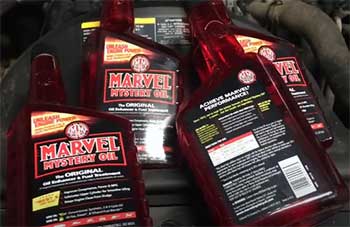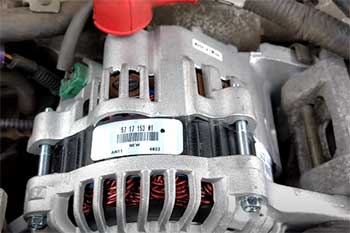Alright, folks, if you’re in the market for tires that won’t break the bank but still deliver a solid punch, let me put the Vercelli Strada II on your radar. I’ve been rolling on these bad boys for a while now, and I’m here to tell you—they’re worth every penny.
Whether you’re dodging rain puddles or cruising on dry highways, these high-performance all-season tires have got your back. Trust me, you’ll want to snag a set for your ride before I’m done convincing you with my real-world take.
Let’s get rolling!
My Experience With The Vercelli Strada II Tires

Picture this: I’m driving my Dodge Charger down a twisty backroad, the kind where you feel every bump and curve.
My old tires?
Total junk—slipping in the rain, squealing like a banshee around corners, and making me question my life choices at every puddle.
So, I started hunting for a replacement.
Local tire shops were quoting me $150 to $300 per tire for my size (245/45R20), and I wasn’t about to drop that kind of cash.
After some online sleuthing, I stumbled across the Vercelli Strada II—$100 a pop, shipped fast, and promising high performance. Sold.
The day they arrived, I was like a kid on Christmas morning. I got them mounted at a local shop, and the installer raised an eyebrow—“Vercelli? Never heard of ‘em.” I shrugged it off, figuring I’d find out soon enough if I’d made a brilliant move or a massive mistake. Spoiler: it was the former.
First drive?
Night and day difference. The road noise was practically nonexistent—sure, my exhaust growls like a beast, but I could tell these tires weren’t adding to the racket. I hit the highway, pushed them to 85 mph (don’t judge me), and they held steady—no wobble, no drama.
Then came the rain. I’m talking a proper downpour, the kind that turns roads into slip-n-slides. These tires gripped like champs—no hydroplaning, no sketchy moments. I even took a cloverleaf off-ramp at 60 mph (yes, I’m that guy), and while they squealed a bit, I never felt like I was losing control.
That solid center rib they brag about? It’s legit—steering felt sharp and responsive.
Fast forward nearly two years and about 40,000 miles later—I rotated them religiously, mind you—and they’re still kicking. The outer edges on the front pair got a little chewed up, but I chalk that up to a funky front-end issue I’m still sorting out (tie-rod, maybe?).
Even so, I’ve taken my Charger up to 147 mph (on a closed track, of course), and these tires didn’t flinch. For a budget-friendly option, that’s wild. Now, I’m back to buy another set because I trust them that much. You’ll see why as I break it all down.
What Makes The Vercelli Strada II Tick?
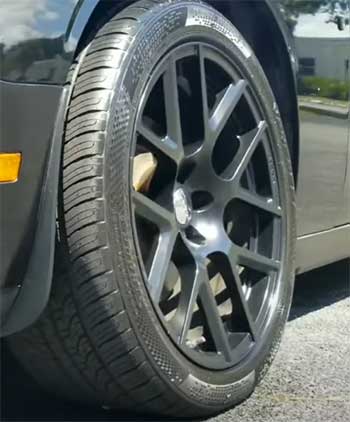
Let’s talk about what these tires are packing.
The Vercelli Strada II is a high-performance passenger tire, built for all-season action with an M+S (mud and snow) rating.
That means it’s ready for more than just sunny days—it’ll tackle light snow and sloppy mud without blinking.
Available in sizes from 16″ to 22″, it fits everything from your grandpa’s old sedan to your shiny new crossover.
The design is where it gets interesting.
A solid center rib keeps your steering on point, while the directional tread pattern and big outer blocks scream “I’m here to handle corners.”
Those optimized sipes—little slits in the tread—boost traction, and the tread grooves keep things quiet while shedding water like a pro. Plus, it’s got low rolling resistance, which means better mileage and a happier wallet at the gas pump.
It’s not fancy tech for the sake of fancy—it’s practical stuff that works.
Pros of The Vercelli Strada II
Now, let’s get to the good stuff—why I’m such a fan of these tires. Buckle up, because there’s a lot to love here.
- Unbeatable Price Point: First off, the price is unbeatable. At around $100 per tire, you’re getting high-performance vibes without selling your soul to the tire gods. I’ve compared them to big names like Michelin and Goodyear, where you’re easily dropping $200 or more per tire, and I’m sitting here thinking, “Why?” For my money, the Strada II delivers 90% of the performance at half the cost. That’s a win in my book.
- Stellar Traction: Traction? Oh, it’s there. I’ve driven through torrential rain, light snow, and bone-dry highways, and these tires stick to the road like glue. The sipes and directional tread make a huge difference—I can feel it when I’m carving through a turn or braking hard. No slipping, no sliding, just confidence. My wife’s Taurus SHO with AWD and these tires? It’s a beast in any weather.
- Sharp Handling: Handling is another big plus. That solid center rib isn’t just marketing fluff—it sharpens up your steering. I’ve noticed quicker response times compared to my old tires, especially on tight corners. It’s not racecar-level precision, but for an all-season tire, it’s darn impressive.
- Quiet Ride: They’re quiet, too. I mean, my Charger’s exhaust drowns out most noise anyway, but when I’m cruising in my wife’s quieter ride, the Strada IIs don’t hum or whine like some tires do. The tread grooves do their job, keeping road noise low and the ride smooth. Comfort matters, and these deliver.
- Impressive Tread Life: Tread life is a standout. After almost 40,000 miles, mine still have decent depth—probably thanks to the low rolling resistance and my rotation habit. Some folks online say they’ve hit 50,000 miles or more, and I believe it. For a tire this affordable, that’s longevity you don’t expect.
- Fuel Efficiency Bonus: Lastly, fuel efficiency. The low rolling resistance isn’t just a buzzword—I’ve noticed a slight uptick in my MPG since switching. It’s not dramatic, but over months of driving, those pennies add up. Who doesn’t love saving a little at the pump?
Cons of The Vercelli Strada II
Alright, I’m not here to sugarcoat things—these tires aren’t perfect. Let’s talk about where they fall short.
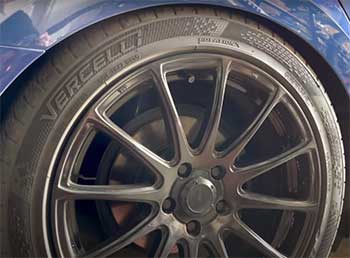
- Limits at Extreme Speeds: For one, they’re not invincible at extreme speeds. I’ve pushed them hard (147 mph, remember?), and they held up, but I wouldn’t trust them for sustained triple-digit runs. The speed rating’s decent (W, up to 168 mph), but they’re not track-day warriors. If you’re a speed demon, you might want something pricier.
- Tread Wear Variability: Tread wear can be a mixed bag. Mine have lasted great, but I’ve heard from others that after 20,000 miles or so, they can harden up and get noisier. I haven’t hit that point yet, but it’s something to watch. Your driving style and road conditions play a big role here—burnouts and potholes will chew them up faster.
- Sidewall Vulnerability: Sidewall durability is another gripe. They’re not the beefiest, so if you’re slamming into curbs or potholes like me (guilty), you might see some damage. I’ve been lucky, but a buddy of mine had a sidewall blowout after a nasty hit. It’s rare, but it happens.
- Lack of Brand Prestige: And let’s be real—Vercelli’s not a household name. When I tell people what I’m running, I get blank stares. There’s no brand prestige here, which might bug you if you’re into flexing Michelin or Bridgestone logos. For me, performance trumps labels, but I get it.
Maintenance Tips To Keep Your Vercelli Strada II Rolling
Want these tires to last? Here’s how I’ve kept mine in top shape—and how you can, too.
- Rotate Regularly: Rotate them every 6,000 to 8,000 miles. I learned this the hard way when my front tires started wearing unevenly—probably that wonky front-end issue I mentioned. Switching them front-to-back keeps the tread even and stretches their life. Most shops will do it cheap, or grab a jack and DIY if you’re handy.
- Monitor Tire Pressure: Check your tire pressure monthly. The Strada II’s low rolling resistance is great for mileage, but underinflation kills that perk fast. I keep mine at 35 PSI (check your car’s manual for the sweet spot), and it’s made a difference in wear and fuel economy. A cheap gauge is your best friend here.
- Get an Alignment: Alignment’s key. If your car’s pulling or the steering feels off, get it checked. I suspect my uneven wear came from a misaligned front end—don’t let that happen to you. A quick alignment at the shop can save you from replacing tires early.
- Dodge Potholes: Avoid pothole roulette. Those sidewalls aren’t bulletproof, so dodge the craters when you can. I’ve swerved like a madman to avoid some, and my tires thank me for it. If you do hit one, inspect for bulges or cuts—better safe than stranded.
- Check Tread Depth: Keep an eye on tread depth. Use the penny trick—stick Abe Lincoln’s head in a groove; if you see the top of his head, it’s time to start shopping. Mine are still good after 40,000 miles, but I check every few months just in case.
- Drive Smart: Drive smart. Burnouts are fun (I’m guilty), but they shred tread fast. Ease off the aggressive starts and you’ll get more miles out of these. Same goes for slamming corners at 60 mph—fun, but not friendly to longevity.
How The Vercelli Strada II Stacks Up Against The Big Boys?
I’ve rolled on plenty of tires over the years, so let’s put the Vercelli Strada II head-to-head with some other budget-friendly contenders—Arisun, Evoluxx, and Mastertrack. No fluff, just real-world comparisons from a guy who’s been there.
Here’s how they stack up.
- Vercelli Strada II Vs. Arisun Tires
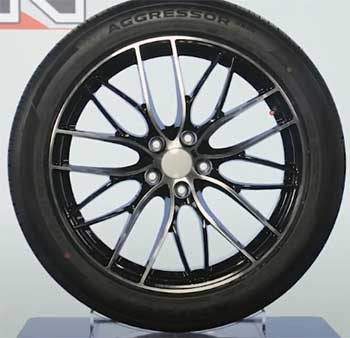
Arisun’s a budget player like Vercelli, offering all-season options around $90-$110 a tire.
I’ve tried their ZG02 model, and it’s decent—grips okay in dry conditions and handles light rain without much fuss.
But here’s the rub: the Strada II outshines it in wet traction and cornering.
Arisun felt a bit mushy on sharp turns, while Vercelli’s solid center rib keeps my Charger planted.
Noise-wise, they’re close—both quiet enough—but the Strada II’s tread life feels longer.
My Arisuns started fading at 30,000 miles; Vercelli’s pushing 40,000 and counting.
For a few bucks more, I’d pick Vercelli every time—it’s just punchier overall.
- Vercelli Strada II Vs. Evoluxx Capricorn Tires
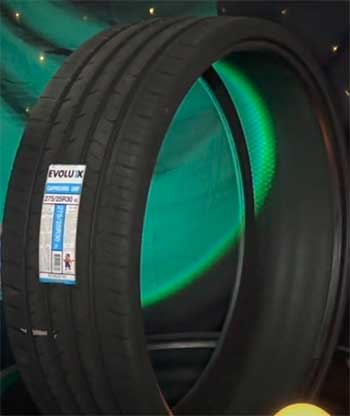
Evoluxx Capricorn tires are another wallet-friendly pick, usually $95-$120 each, aimed at performance on a budget.
I ran a set on my wife’s Taurus for a bit, and they’re smooth—great for highway cruising with low noise. Traction’s solid in dry and wet, but I’ve got to give Vercelli the edge in snow.
The Strada II’s M+S rating actually delivers; Evoluxx slipped a bit on light slush.
Handling?
Vercelli wins again—those big tread blocks make it sharper in corners than Capricorn’s softer feel. Tread life’s a toss-up—both hover around 40,000-50,000 miles with care.
Still, Strada II feels more versatile for my mixed driving. You?
- Vercelli Strada II Vs. Mastertrack Badlands AT Tire
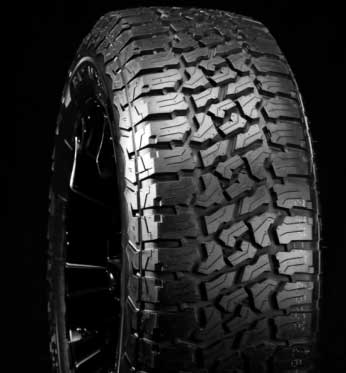
Now, Mastertrack Badlands AT is a different beast—an all-terrain tire, $110-$130 each, built for off-road grit.
I tossed a set on an old Jeep, and they’re champs in mud and gravel, no question.
But on pavement? Vercelli smokes it.
The Strada II’s quieter—Badlands roars like a monster truck—and way better for daily driving with its low rolling resistance.
Traction’s a split: Mastertrack owns dirt, but Vercelli rules rain and snow on roads.
Handling’s no contest—Strada II’s nimble; Badlands feels sluggish on asphalt.
Tread life?
Badlands might edge out at 50,000 miles off-road, but I’m betting Vercelli lasts just as long on pavement. If you’re not hitting trails, stick with Vercelli.
Frequently Asked Questions (FAQ)
From my experience, they’re good for 40,000 to 50,000 miles if you treat them right—rotations, proper pressure, all that jazz. Some folks push them past 50,000, but aggressive driving or rough roads can knock that down to 30,000. The warranty says 45,000 miles, and I’m on track to hit that.
They’re crafted in Thailand under the Vercelli brand, which is owned by American Omni Trading (AOT). AOT’s been in the tire game for over 30 years, importing value-priced rubber that punches above its weight. Not a big name, but they know their stuff.
That’d be American Omni Trading, based out of Katy, Texas. They’re the masterminds behind Vercelli, focusing on affordable performance tires. Think of them as the underdog delivering quality without the hype.
Michelin’s the champ here—models like the Defender T+H can hit 80,000 miles or more. Goodyear and Continental often top out around 60,000-70,000. Vercelli’s 45,000-50,000 is solid for the price, but if longevity’s your only goal, Michelin’s your bet.
How many miles do OEM tires last?
Depends on the car and tire, but OEMs usually last 30,000 to 50,000 miles. My Charger’s factory tires were toast by 35,000—cheap rubber from the assembly line. The Strada II’s outpacing that, which says something.
Conclusion: Get Yourself Some Vercelli Strada II Tires
Here’s the deal: the Vercelli Strada II isn’t just a tire—it’s a steal. I’ve put them through the wringer, and they’ve delivered grip, comfort, and durability without draining my bank account.
You’re getting near-premium performance for budget bucks, and that’s hard to beat.
So, do yourself a favor—grab a set, hit the road, and feel the difference. Trust me, your wallet and your ride will thank you.
